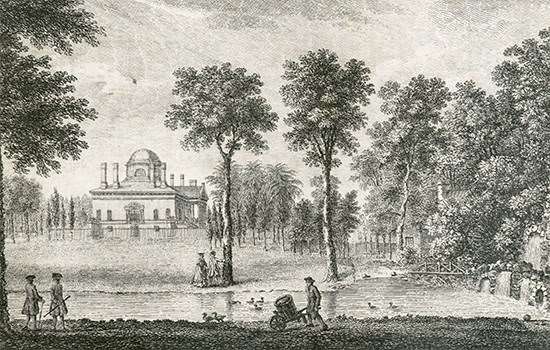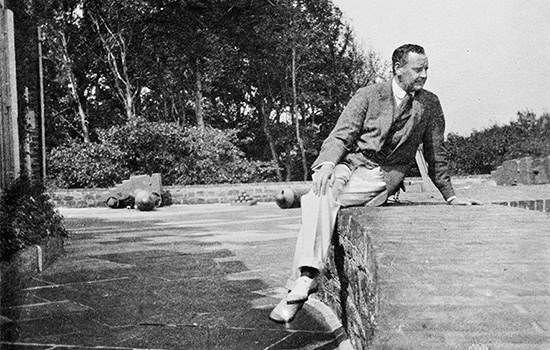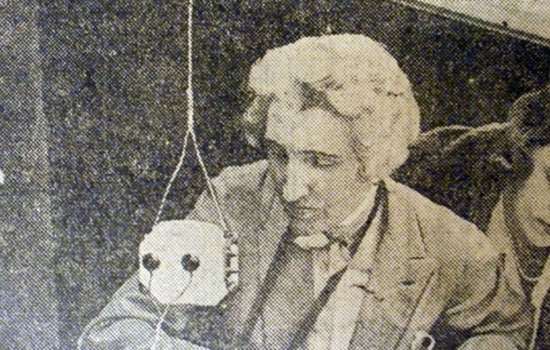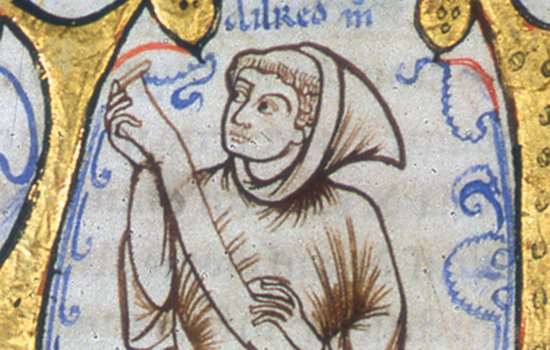Who were the Galli?
In the 3rd century BC, during Rome’s wars against Carthage, the cult of Cybele made a dramatic entrance into Rome. Her cult icon, a massive black rock was accompanied from Pergamon (in modern Turkey) by her priests.
Cybele’s icon had been sent for by the Roman state in a time of crisis and was offered a temple on the Palatine Hill. A later myth has it that her ship became grounded on a sandbank outside Rome – which would have been seen as very unlucky – but was miraculously pulled free by a virtuous Roman woman using only her sash.
The cult of Cybele, also known as Magna Mater, would be part of Rome’s fabric until its Christianisation. Her statue was paraded through the streets annually, accompanied by long-haired priests armed with musical instruments and flagellating themselves with whips made of knuckle bones. These priests were the Galli.
The Galli differentiated themselves from Romen's civic religion through their clothing and behaviour. After entering the cult and castrating themselves, the Galli wore the clothing and jewellery of a Roman woman. They may have received second-hand clothes and other goods from women in exchange for telling fortunes.
The Galli were led by a priest known as the Archigallus, whose finely carved funerary monuments have been found near Rome. Roman citizens could not initially become priests, but this may have changed during the cult’s lifetime.
Galli in Roman poetry
How men presented themselves was extremely important. The Galli, with their ambiguous gender performance, allowed men to examine masculinity without risking the solidity of their own identities. Throughout the Roman Republic there was a focus on the Galli’s un-Roman nature. Foreignness was the way in which the Magna Mater’s cult was placed apart, and they are often viewed as charming curiosities, marked out by their music and ecstatic processions.
Catullus (c84–54 BC) was an aristocratic Roman poet writing in the late Roman Republic. He wrote some of the most well-known Roman poetry, including many to his lover Lesbia. In Poem 63 he uses the Galli’s mythical ancestor Attis to examine Roman masculinity as a whole – is a castrated Attis a man? A woman? Or something else entirely? Attis’ grammatical gender shifts throughout the poem as they undergo castration, ecstatic celebration and regret. For poets like Catullus, a myth is a safe place to examine gender and masculinity from, and he can treat Attis with sympathy. It only becomes uncomfortable and strange when the body being examined is a real person.
However, attitudes towards the Galli changed in the early Empire. Under the rule of Augustus, there was a massive expansion of Roman territory. Many new peoples came to Rome and became citizens, heightening concerns about Roman identity and masculinity. The Galli became more visible inside Rome after Augustus’ rebuilding of the Magna Mater’s temple in AD 3, which made the cult more accessible to Roman citizens. From being a curiosity, they became a threat.
As the Galli’s gender performance became a focal point of discussion, it opened them up to new attacks, particularly from poets like Martial. Martial (AD 38/41 – AD 102/4) was a Roman poet, originally from Spain, who is best known for his witty and often obscene epigrams. He was deeply concerned with masculinity and sexuality. In epigram 5.41, he describes another man as being more feminine then Attis and questions his rights to the privileges of married Roman men. In his poetry castration is presented as being equivalent to emasculation, reflecting the importance to Roman masculinity of being able to produce legitimate heirs. The Galli are reduced to a tool with which to criticise other men.
The end of the cult
In the late Roman Empire, the Galli appear again in Roman literature. They are once more used as a tool to think with – although this time by Christians who are opposed to paganism and to castration. In Prudentius’ (AD 348–413?) Crown of Martyrs he describes the Galli in an attack on pagan religions. Interestingly he places them as being neither male nor female ‘[retaining] a gender between the two’ (Poem X, 1072), although it is unclear whether this is because this is how they described themselves or because it is intended to be insulting.
This attack came at the very end of the cult of Attis. Paganism had increasingly been repressed by the Roman state, and under the Theodosian decrees in AD 389–91, worship was essentially banned. The last known reference to the cult of Magna Mater is a dedicatory inscription at her temple in AD 390. The fate of any remaining Galli is unknown.
The Galli in Britain
Most figures in Roman Britain are shadowy at best: if we are very fortunate, they appear briefly to us through an inscription or a mention in a Roman writer’s work. We have no direct evidence for the Galli in Roman Britain, but the archaeological record suggests that they may have been present.
We know that Cybele and Attis were worshipped in Roman Britain, including on Hadrian’s Wall. An altar to Cybele was found at Corbridge in 1913, which had been the site of a Roman fort and town, and another was discovered at Chesters Roman Fort. The Corbridge altar was eventually broken up and used to fill a cavity under a floor. More images of Cybele’s consort Attis have been found across Britain. He is typically depicted wearing a Phrygian cap, a soft hat with a folded tip. One such figure was discovered at Corbridge and probably dates from the 3rd century AD. As the Galli were associated with both Attis and Cybele, these discoveries make the Galli’s presence in Britain very plausible.
The most enticing piece of evidence for the Galli’s presence in Roman Britain, however, is found south of Hadrian’s Wall, at Catterick in North Yorkshire – the site of Roman Cataractonium. In 2002 archaeologists uncovered an unusual burial. The skeletal remains appeared to be male, but were buried with women’s clothing and jet jewellery. Although all Romans wore jewellery, only women wore jet, which was associated with childbirth and magic. It is difficult for archaeologists to interpret identity through burial goods, but this is a strong indicator that this person was not seen as a man by the people who buried them.
Isotopic analysis of the remains, although inconclusive, has suggested that they grew up either in the south of Britain or in a similar climate. The quality and quantity of their jewellery, some of which might have come from nearby Whitby, also gives the impression that they were well off. Archaeologists have interpreted this individual as a Gallus, especially as we know that the cult of Attis and Cybele were present in northern Britain.
The Galli are striking as a case study in how gender expression has always been complex, which makes their history highly meaningful to many LGBTQ+ people today. Although we cannot know how they thought about their own identity, their presence in the historical record hints at a richer and queerer past than we can possibly imagine.
Top image: A relief of a Gallus making sacrifices to Cybele, from the 3rd century AD (© Public domain)
More Stories of England’s LGBTQ+ Past
-

Piers Gaveston, Hugh Despenser and the Downfall of Edward II
Discover how Edward II’s reliance on his ‘favourites’ and possible lovers, Piers Gaveston and Hugh Despenser, led to his abdication and death.
-

Sir Walter Hungerford and the 'Buggery Act'
Find out how Sir Walter Hungerford, owner of Farleigh Hungerford Castle, came to be the first man in England to be executed under the ‘Buggery Act’.
-

‘Romantic Female Friendship’ and Chiswick House
Explore the life of Georgiana, Duchess of Devonshire, and the fashion for ‘romantic female friendships’ in 18th-century England.
-

Lord Beauchamp and Walmer Castle
Public exposure of Lord Beauchamp's sexuality led to a dramatic fall from grace in the 1930s. Read more about the man whose misfortunes inspired Evelyn Waugh’s Brideshead Revisited.
-

Gwen Lally and the Battle Abbey Pageant
Gwen Lally directed a cast of thousands at the Battle Abbey historical pageant in 1932. Find out more about the pageant and its unconventional pageant master.
-
Experiments in Gender
In the early 20th century women such as Vita Sackville-West, Gwen Lally and Radclyffe Hall adopted masculine styles of dress that were subversive, exploratory and playful. Historian Alison Oram explores more.
-

The Partners: Seely and Paget
Discover the story of John Seely and Paul Paget, partners both in life and in an archictecture practice, whose masterpiece was their transformation of medieval Eltham Palace into an art deco home in the 1930s.
-

Aelred of Rievaulx
Read about the life of the 12th-century abbot of Rievaulx Abbey whose writings have become a source of inspiration for LGBTQ+ Christians.
